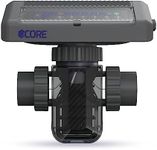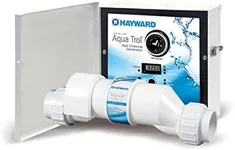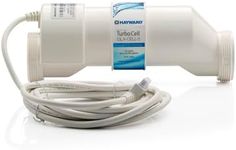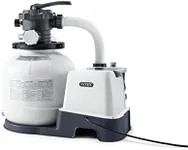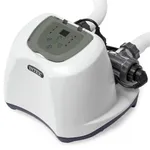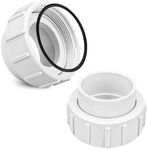Buying Guide for the Best Salt Water Pool Systems
Choosing a salt-water pool system can make pool maintenance easier and swimming more enjoyable, but it's important to understand the key features before making a decision. Salt-water systems use salt to generate chlorine, which keeps your pool clean and safe. When shopping for a system, focus on how it matches your pool size, how easy it is to use and maintain, and what kind of installation and upkeep it requires. Understanding the main specifications will help you pick a system that fits your needs and ensures a pleasant swimming experience.Pool Capacity (Gallons)Pool capacity refers to the maximum amount of water the salt-water system can effectively treat, usually measured in gallons. This is important because a system that's too small won't keep your pool clean, while one that's too large may be unnecessary. Systems are often grouped for small (up to 15,000 gallons), medium (15,000–30,000 gallons), and large pools (over 30,000 gallons). To pick the right one, check your pool's volume and choose a system rated for at least that size, or slightly larger for better performance.
Chlorine OutputChlorine output is the amount of chlorine the system can produce, usually measured in pounds per day. This matters because it determines how well the system can keep your pool sanitized, especially during heavy use or hot weather. Lower output is fine for smaller or lightly used pools, while higher output is better for larger or frequently used pools. Consider your pool size, how often it's used, and local climate when deciding how much output you need.
Control Panel FeaturesThe control panel is where you adjust and monitor the system. Features can range from basic on/off switches to digital displays with timers, salt level indicators, and self-cleaning settings. More advanced panels make it easier to manage your pool, but may be more complex. If you prefer simplicity, look for basic controls; if you want more control and information, choose a system with a digital or programmable panel.
Self-Cleaning FunctionSelf-cleaning refers to the system's ability to automatically clean its own cell, which helps prevent buildup and reduces maintenance. Some systems reverse the electrical flow to clean the cell, while others require manual cleaning. Automatic self-cleaning is convenient and saves time, making it a good choice if you want less hands-on maintenance. If you don't mind occasional manual cleaning, a simpler system may suffice.
Salt Level RangeSalt level range is the amount of salt (measured in parts per million, or ppm) the system needs to work properly. This is important because too little salt means the system can't generate enough chlorine, while too much can cause corrosion. Most systems work best between 2,500 and 3,500 ppm. Check your pool's salt level regularly and choose a system with a range that matches your maintenance habits and local water conditions.
Installation TypeInstallation type refers to whether the system is designed for in-ground or above-ground pools, and how easy it is to install. Some systems are plug-and-play and easy to set up, while others may require professional installation. Consider your pool type and your comfort with DIY projects when choosing a system. If you want a quick setup, look for user-friendly installation; if you have a complex pool or want a permanent solution, professional installation may be better.



